Acrylic paint is one of the most versatile, forgiving, and widely used media in contemporary art. Whether you’re painting large canvases, doing mixed media, or working plein air, choosing the right paint matters. This article digs into the best acrylic paint for professional artists, brands that deliver the pigment strength, permanence, and performance needed at a high level, while also helping beginners understand what “pro grade” really means.
What Makes a Paint “Professional Grade”
Before naming names, let’s clarify what defines best professional grade acrylic paint:
- Pigment load & quality: Fewer fillers, more pure pigment. High pigment means richer color, stronger tinting power, better coverage.
- Lightfastness / permanence: Paints should resist fading over time; ASTM or other ratings help.
- Consistency and viscosity: Heavy‐body for texture and brush/knife work; fluid for washes; open/slow‐drying ranges for blending.
- Color accuracy & minimal drying shift: Some paints darken/alter hue as they dry; top brands minimize this.
- Archival & durability: Flexible films, non‐cracking, non‐yellowing, good adhesion, stable binder systems.
When you see phrases like the highest quality acrylic paint or highest rated acrylic paint, these are generally pointing to the brands that excel in these criteria.
Why Beginners Should Care Even Early On
Using the best acrylic paint for beginners isn’t about extravagance, it’s about getting paint that responds well, lasts, and gives accurate feedback. If beginner paints are muddy, thin, patchy, or fade quickly, you’ll waste time, money, and motivation. So even if you’re starting, aim for lines that offer “student upgrade” ranges, paints from the same brands that do pro grade, but more affordable. Many professional artist acrylic paint brands offer such stepping stones. For example, Winsor & Newton’s Galeria line is less expensive but decent for learning.
Top Professional Artist Acrylic Paint Brands
Here are some of the highest regarded professional artist acrylic paint brands, with analysis of what makes them great, and where they fall short.
| Brand | What’s Excellent | What Might Disappoint You / Trade‐Offs |
|---|---|---|
| Golden Artist Colors | Among the very best. Offers Heavy Body, Fluid, OPEN (slow drying) lines. Their pigment load is superb; brush strokes and texture hold well. Colors stay vivid. Consistency is reliable—if you want rich, saturated, highly expressive painting, this is top tier. | Very expensive. Some colors (especially in heavy body) have different sheens/opacities, so mixing can require planning. Drying time is fast (except OPEN), so blending large areas can be tricky. |
| Liquitex (Professional / Heavy Body) | Great balance of quality & availability. Excellent consistency, many color options, good pigment quality. Their heavy body line allows thick texture, sharp brush/knife marks. They also have fluid and soft-body ranges. Minimal color shift. | Some of their hues can feel less buttery compared to Golden. For ultra‐thick impasto, Golden may hold slightly better. Also, the cost climbs as you add specialty colors. |
| Winsor & Newton | Known, trusted, with predictable mixing behavior. Their pro acrylics offer smooth blending, good lightfastness, and wide color choices. | Their lines can shift sheen (some gloss/satin/matte differences), and heavy impasto use may show slightly less texture/“tooth” than Golden or Liquitex heavy body. Also, more expensive in some regions, shipping/costs can add up. |
| Grumbacher | Offers good quality, especially the “Academy” or “professional” lines. Their pigments are generally strong, and lightfast ratings are good. | Though solid, they may not match top pigment load in certain colors compared to Golden/Liquitex. Some colors have less opacity or weaker covering power; dries slightly less tough in thick layers sometimes. Also, selection may be narrower for exotic pigments. |
Best Acrylic Paint , Real Product Recommendations
Here are several highly rated acrylic paint products (from Amazon) that are excellent choices. Each is reviewed with pros and cons, so you know what fits your own style and needs.
Golden Heavy Body Mixing Set (12-Color)
A superb set for serious artists. The twelve split-primary colors allow mixing a wide gamut. The heavy body texture is excellent, brush strokes & palette knife marks remain crisp. Downsides, size of tubes is small for frequent large work; cost per ml is high. Great if you want to explore many pigments with top quality.
Liquitex Professional Heavy Body Essentials Set 12×22 ml
Fantastic value for true professional grade acrylic paint. Each color in this set is richly pigmented, dries with integrity, and applies thickly without jelly-like “globbing”. On the flip side, the colors can feel slightly less dense for certain pigments than Golden, but you get excellent performance across the board.
Golden Heavy Body Traditional Set 8-Color
Includes historically significant colors useful for figurative work—or if you want a compact yet premium palette. Great for travel, smaller projects, or when you want a core set. Only 8 colors, so once you use them up / run out, replacing specific ones can be expensive.
Golden OPEN Slow-Drying Mixing Set 12-Color
For those who hate acrylics drying too fast, this OPEN line is a relief. You get more blending time, glazing, etc. Ideal for portraiture or work where you want oil-like transitions. Trade-off: it dries slower, so if you’re layering fast you may have to wait; cost much higher. Also, sheen differences may be more noticeable.
Golden Heavy Body Titanium White 5 oz
White might be the most used color, this one is very opaque, excellent covering. If your painting style uses a lot of white or you use whitening mixes, having a strong white is essential. Only downside: large tube is expensive; also, heavy body whites tend to stay thick, sometimes too much for smooth blends unless you thin.
Liquitex Heavy Body Classic 12-Color Set
Another strong set. These paints hold brush stroke very well, the color saturation is high, and the consistency is reliably thick. For abstract work or impasto, this set shines. Drawbacks: color selection is fairly standard; special pigments (like cadmiums or rare hues) are missing.
Golden Primary Cyan 2-oz Tube
A single pigment tube is useful if you already have basic primaries and need to enhance your mixing. Cyan is powerful. Good quality; but expensive per ml; also strong pigment can stain brushes/palettes more.
Golden Heavy Body Intro Set 6-Color
Good starter for someone stepping into pro-grade work. Six core colors + white/black probably adequate to get going. Does cost less than full sets. Trade-off: smaller tubes; fewer colors means more mixing and possibly compromises in saturation for certain hues.
Comparing and Choosing: What’s Right for You
Different artists prioritize different things. Here’s how to pick among the best when you’re deciding.
| Priority | What to Look For / Ask Yourself |
|---|---|
| Texture / Body | Do you like impasto, visible brush/knife marks? Then heavy body. If you prefer glazes or washes, thinner or fluid paint (or using mediums) is better. |
| Blending Time / Dry Speed | Fast‐drying acrylics force you to work in smaller areas or use retarders/open paints. Slow-drying ranges like Golden OPEN give more working time. |
| Color Range & Pigment Variety | Some brands have uncommon pigments (cadmiums, quinacridones, etc.). If your palette demands them (say for realism or certain styles), check your brand’s color chart. |
| Lightfastness & Archival Quality | Look for ASTM I or equivalent, “excellent” ratings. If your work is sold or meant to last, this matters. |
| Cost / Accessibility | Even pro artists have budgets. Shipping, import taxes, and local availability may make some brands much pricier in certain countries. Student lines from the same makers may sometimes offer value until you can afford full pro lines. |
Common Weaknesses & How to Mitigate
Even with the best artist grade acrylic paint, you will encounter trade-offs. Here are some typical issues and how to manage them:
- Paint dries too fast: Use retarder mediums, keep palettes moist/covered, or use slow-drying lines like Golden OPEN.
- Color shifts (darkens) upon drying: Test small patches, get sample tubes first; choose brands known for minimal shift (Golden, Liquitex pro lines, Winsor & Newton).
- Cracking or peeling in thick layers: Ensure proper support (canvas, rigid supports), use gels or additives to improve flexibility, don’t build extremely thick layers without allowing each to dry/flex properly.
- Uneven sheen or varnishing issues: Some pigments dry matte vs. glossy; varnishes or mediums can help standardize; use gloss varnish or flat varnish depending on final finish desired.
Pro Tips & Related Knowledge
- Choosing the right paint is only part of the job; how you prepare surfaces (priming, sealing), clean your brushes, and thin or mix mediums is just as important. For example, if painting on wood, check out what paint to use on wood for compatibility issues.
- Drying speed also affects workflow, if you need paint to dry fast (for layering), there are techniques to make paint dry fast.
- For interior or exterior installations, understanding surfaces is critical. Painting ceilings, walls, there are related articles like best way to paint a ceiling or how to clean walls before painting.
My Personal Recommendation
If I were to pick one line for most professional painters, I’d lean toward Golden Heavy Body or Golden OPEN if your style needs blending and slow drying. The richness, durability, and reliability are worth the cost. If budget or local access is limited, Liquitex Professional Heavy Body offers excellent value, balancing performance, availability, and cost.
If you’re starting out, invest in a smaller pro-grade set (6, 12 colors) rather than many cheap tubes, you’ll learn more, your work will look better and last longer. This way you can experience what the best acrylic paint means in practice, not just in theory.
Conclusion
The best artist grade acrylic paint isn’t just what feels good right now, but what holds up, color, tone, texture, over time. Whether you’re a seasoned pro or a beginner stepping into serious painting, choosing well early saves frustration, supports growth, and lets your creativity shine with real fidelity and permanence.
When looking for the best acrylic paint for professional artists, you want pigment strength, lightfast permanence, versatile consistency, and archival performance. Brands like Golden, Liquitex, Winsor & Newton, Grumbacher, and others consistently deliver that. The highest quality acrylic paint brands will tend to cost more, but one good tube can outperform several cheaper ones in durability and richness.

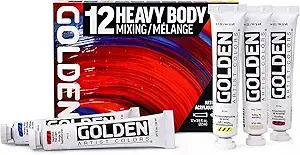
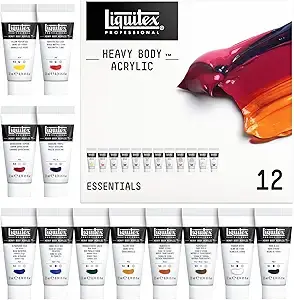
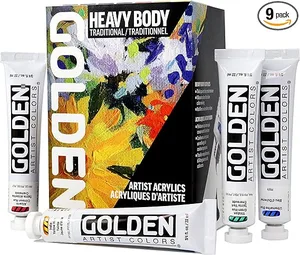
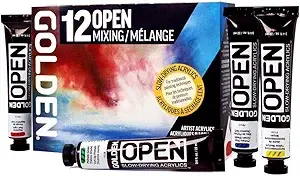
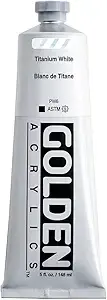
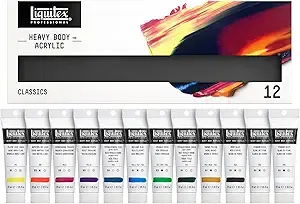

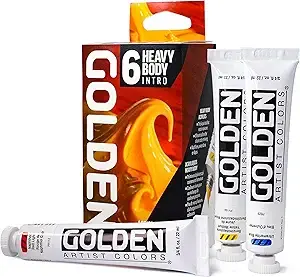
Leave a Reply